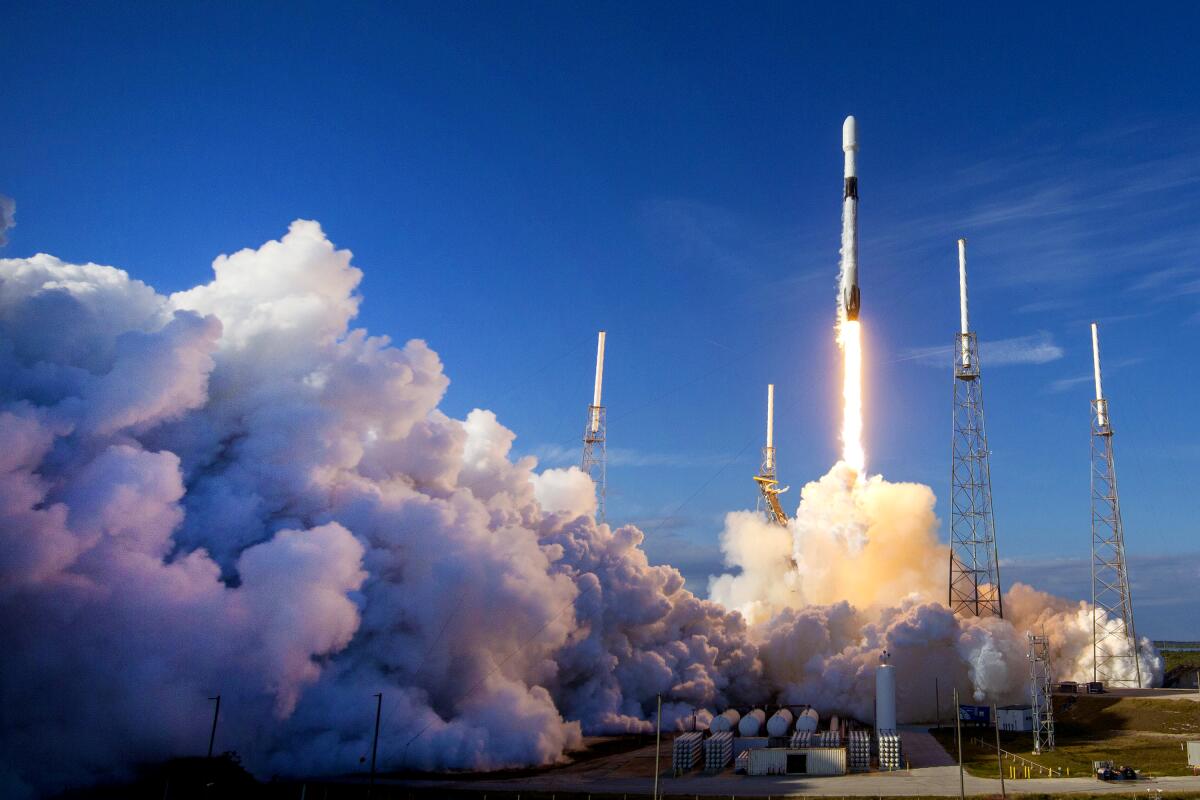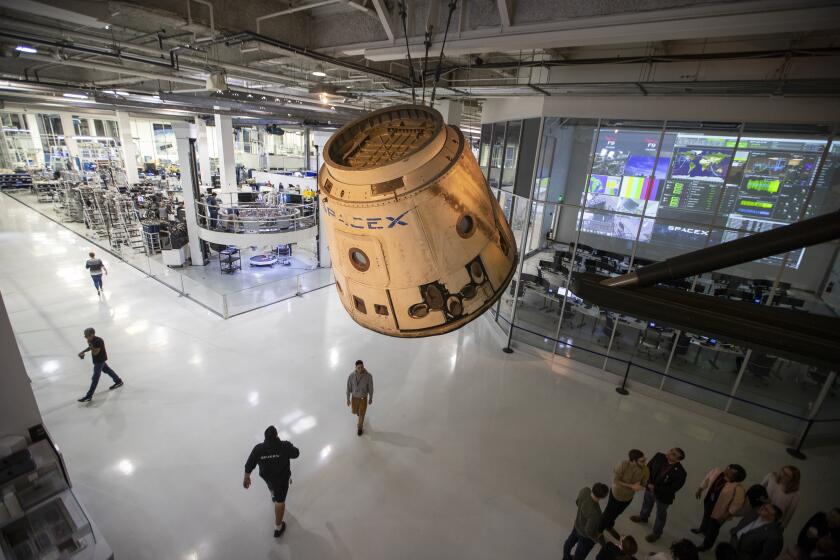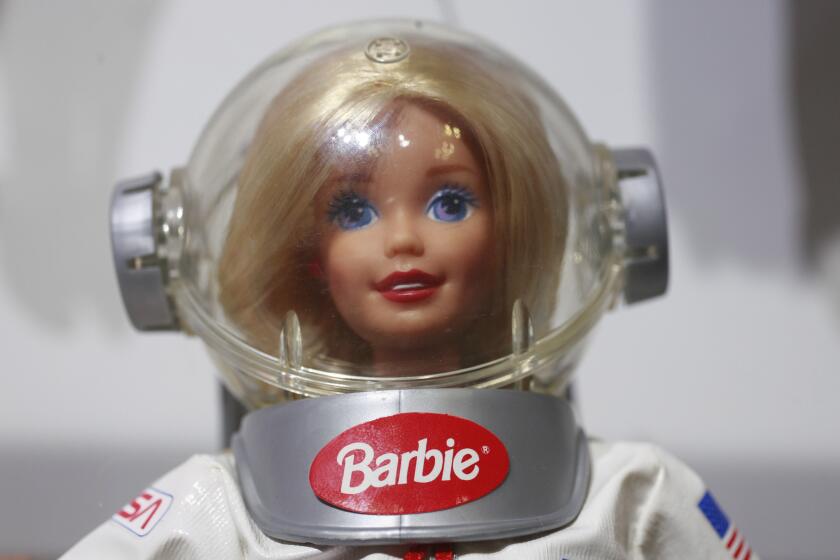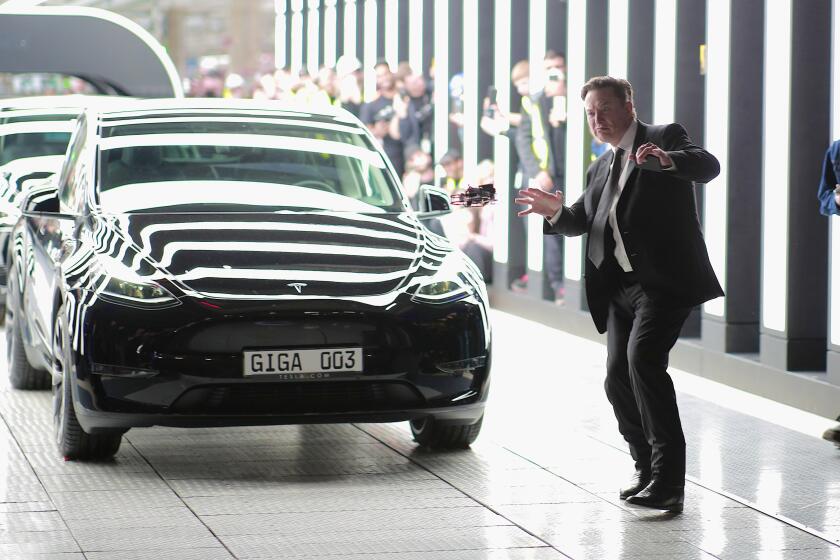How Musk plans to kill off cellphone dead zones across the U.S.

- Share via
The danger of getting lost in the desert or stranded at sea, unable to raise an alarm, may become a thing of the past as soon as next year if Elon Musk’s latest project goes off without a hitch.
The SpaceX chief teamed up with T-Mobile Chief Executive Mike Sievert to unveil a new service that will use Musk’s Starlink satellites to offer cell coverage in every corner of the U.S.
Sievert said there were more than half a million square miles of dead zone — areas not covered by any cellular network — across the country. The project with SpaceX is “a lot like putting a cellular tower in the sky, just a lot harder,” he said Thursday at a kick-off event in Bolsa Chica, Texas, home to SpaceX’s Starbase facility.
Here’s how the companies plan to do it, what it means for mobile users and what the limitations will be:
What is it?
The two companies want to create an entirely new mobile network, broadcast from Starlink satellites, that uses T-Mobile’s existing mid-band spectrum. The service will give customers that sign up phone coverage practically everywhere in the continental U.S., including parts of Alaska, as well as Hawaii, Puerto Rico and even territorial waters.
SpaceX fires employees who complained in a letter that Elon Musk’s antics were ‘a frequent source of distraction and embarrassment for us.’
How will it work?
The new network will be accessible thanks to large, powerful antennas attached to the company’s second-generation of Starlink internet satellites.
Musk said each antenna would measure some 269 square feet and be “extremely advanced because they’ve got to pick up a very quiet signal from your cell phone and then be caught by a satellite that’s traveling 17,000 miles an hour.”
The V2 satellites will launch on SpaceX’s Starship rocket, which is still in development.
Musk said the satellite-based service will work even during hurricanes and natural disasters that knock out traditional cellphone towers.
The T-Mobile service will run in a similar way to data roaming, where a user’s mobile phone will scan for service and, if it finds none, will connect to the satellite. Most phones already have the technology built in and no additional equipment will be required.
Mattel Inc. has agreed to make SpaceX-themed toys in partnership with Elon Musk’s rocket company.
What are the limitations?
The main issue is bandwidth, which will at first limit the service to text messaging. The coverage area will be divided into large cell zones, with each zone’s connectivity limited to around 2-4 megabytes.
Musk said that would allow for some 1,000-2,000 voice calls per cell, or millions of text messages, but the service would not provide a substitute for ground cell stations.
“This is really meant to provide basic coverage to areas that are currently completely dead,” Musk said. In addition, he said there could initially be a delay of “half an hour, maybe worse” for messages to pass through the system.
How much will it cost?
Sievert said he hoped that the service would be bundled for free on T-Mobile’s most popular pricing plans, although lower cost plans where it’s not included could be charged a monthly fee.
The service will be added to Tesla Inc. vehicles to allow drivers to make emergency calls and texts, Musk tweeted.
The California DMV has accused Tesla of false advertising in its promotion of the company’s signature Autopilot and Full Self-Driving technologies.
Will the service be available outside the U.S.?
It’s not clear yet. Sievert said T-Mobile was seeking reciprocal roaming deals with carriers outside the U.S., “so that when those people come and visit the United States and go off the grid into the national parks, they’ll be connected too. And likewise when American citizens travel to those countries, they’ll be connected.”
What’s the timeframe?
SpaceX said in a news release the satellite-to-cellular service would begin with beta testing in select areas by the end of next year, after new satellites have been launched. Musk said the first phase would include messaging, images, possibly small video files, “and even messaging apps,” although he said they had not yet spoken to app providers about how to integrate their services.
Who is the competition?
The move by SpaceX and T-Mobile rivals Amazon.com Inc.’s Jeff Bezos’ low-Earth orbit satellite subsidiary Kuiper Systems LLC, which announced a similar agreement with Verizon Communications Inc. last year. Amazon.com’s Project Kuiper made one of the largest launch deals ever in April to send more than 3,000 satellites into space.
The initial business model for SpaceX’s Starlink division was to provide broadband internet service to homes, particularly in rural areas not served by landline providers. The company has a fleet of about 2,800 satellites in low-Earth orbit, launched in the last few years.
T-Mobile is building one of the nation’s largest 5G networks to provide faster internet connections to phones and homes.
The former Twitter CEO was an energetic booster of Elon Musk’s bid for the social media company, before Musk reversed course and sought to kill the deal.
What does the future hold?
After messaging, the companies hope to work on voice calls and data, possibly beyond T-Mobile. Musk said SpaceX is offering an “open invitation” to other carriers to work with Starlink.
But Musk has grander ambitions. “We’d love to have T-Mobile on Mars,” he said.
Bloomberg reporters Sean O’Kane, Scott Moritz and Loren Grush contributed to this report.
More to Read
Inside the business of entertainment
The Wide Shot brings you news, analysis and insights on everything from streaming wars to production — and what it all means for the future.
You may occasionally receive promotional content from the Los Angeles Times.













